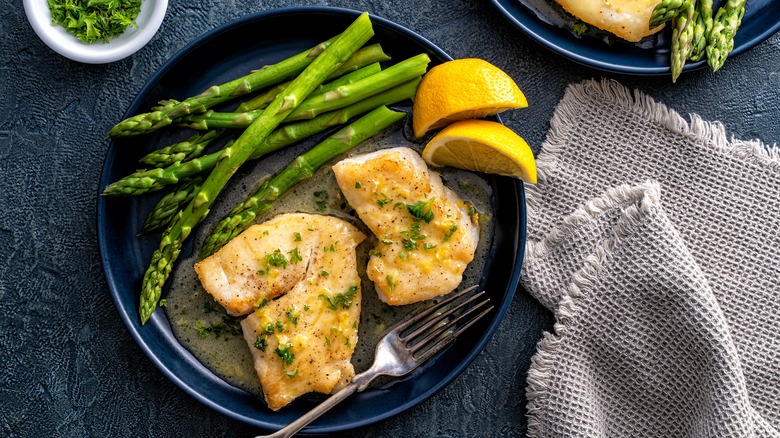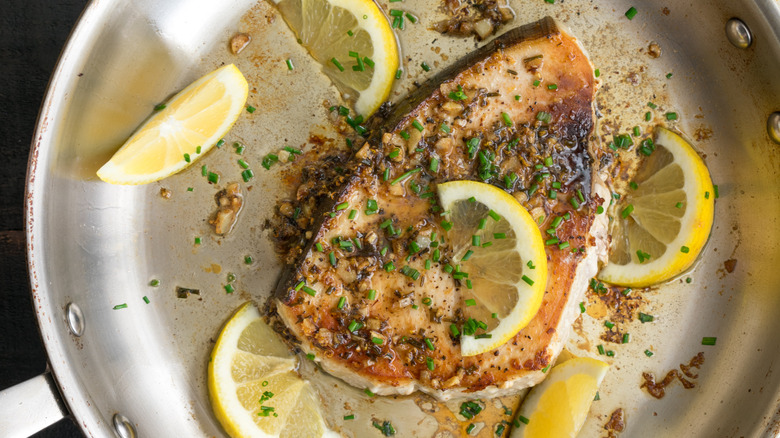The Top Mistake To Avoid When Making Pan-Fried Fish
Chicken breasts may get a lot of the attention, but when it comes to a quick and easy meal that's both healthy and delicious, pan-fried fish can't be beat. Tender and flaky with enough flavor that it only needs a little salt and lemon, a good piece of fish can go from fridge to plate in 10 minutes or less. It's also healthy, with the Washington State Department of Health noting fish is a low-fat protein that is rich in vitamins and minerals like iron, zinc, iodine, and potassium. It's the perfect thing to plan for a busy weeknight, or keep in the fridge to be tossed on the stovetop when the need or craving strikes.
Fish can be a bit intimidating though. The variety of choices, from catfish to snapper, are far greater than the ease of chicken, and the reputation of bad fish making you sick can turn away people who don't have access to fresh seafood. As AllRecipes notes, fish is also easy to mess up, being much more sensitive to water, seasoning, and overcooking than most meat. Dry, tough fish is a real turn-off, and the simplicity of many seared fish recipes means a bad piece is going to stand out more than an overcooked chicken breast that's been slathered in sauce.
Luckily, learning just a couple tips or mistakes to avoid can be enough to start turning out perfectly cooked filets.
Don't move your pan-fried fish too much
If you've handled a tilapia filet before, you already know how much more delicate fish is than meat, even before it's cooked. That's why one of the biggest mistakes you can make when pan-frying your fish is to move it too much in the skillet. According to Food & Wine, as you touch fish in the pan, its tender flesh can lose juice and start falling apart. Instead, you want to leave it undisturbed the entire time each side is cooking, only touching it to flip it over halfway through.
To help with disturbing your fish as little as possible, Reader's Digest notes that you should be using a thin metal or rubber spatula to move your fish, never tongs. You also want to give it time to fully cook on each side before flipping it over. The crispy crust of seared fish has a strong tendency to stick to the pan, even when cooked right, but once it's fully cooked, your spatula should slide under it more easily. Waiting until it naturally separates from the pan will prevent you from leaving hunks of fish fused to the surface, and undoing all your patience in not moving it around too much.
With just these few basic precautions, your pan-fried fish will already be halfway to perfection, and some light and juicy whitefish will be finding its way into your dinners more than ever before.

